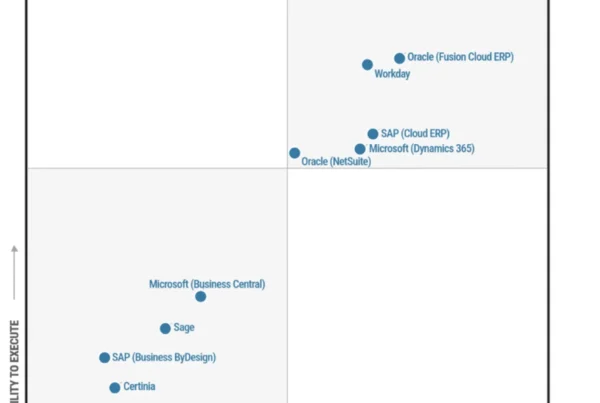The COVID-19 pandemic has certainly served as a wake-up call for many businesses. Not only has it highlighted the need for better insights across the entire operational experience, but this global stressor also exposed vulnerabilities in business models and workforce strategies.
The pandemic also brought to light the importance of agility and adaptability in the face of change. In order to survive and thrive in the new normal, businesses must be able to pivot quickly and effectively to meet the ever-changing needs of their customers. Enterprises are increasingly focusing on service-centric business models that provide recurring revenue streams.
To better understand these trends, Microsoft commissioned Forrester Consulting to investigate where companies are succeeding, struggling, and investing in their quest to move toward service-centric business models and project-based operations. In the study, Foster Business Model Innovation To Achieve Growth Goals, Forrester Consulting explored how this trend impacts the global business landscape and associated business teams.
Business model innovation
Learn how to achieve growth goals with business model innovation.


Forrester highlights three areas of need
In March and April 2022, Forrester conducted an online survey of 509 global financial leaders who have decision-making influence within service and project teams or businesses.1 They also performed two qualitative interviews with global practice and financial leaders. The research participants were asked about project-centric business tools. Companies ranged in size from 500 to more than 20,000 employees.
Forrester Consulting’s study highlighted three areas of need that organizations are struggling with.
Societal and business trends
With more employees working from home, the line between personal and professional life has blurred. This change compelled organizations to focus more on employee well-being, inclusion, and connectivity. Organizations are pushing for greater connectivity and convergence to foster an always-on culture.
These trends have pushed more than 75 percent of respondents to invest in the cloud, infrastructure as a service, software as a service, and the Internet of Things. By investing in these areas, organizations can provide their employees with the resources they need to succeed both at work and at home.
Multiple roadblocks
Macroeconomic trends, such as supply chain issues and staffing shortages, prevent organizations from adopting service-centric business models. About 42 percent of respondents reported struggling to keep up with demand due to external supply chain disruptions. Companies are also facing internal challenges, such as a lack of clarity and connectivity, which are preventing them from optimizing project delivery.
Unlocking new revenue streams
Revenue recognition is the main driver for business model transformation, with businesses looking to refine their product offerings as well as their pricing. About 40 percent of respondents are working to evolve their financial models, including how they charge customers and structure their entities.
This insight corresponds with a focus on improving strategy and planning that respondents are prioritizing. Improving team collaboration and connectivity also ranks highly with organizations investing in this area. Finally, workforce well-being is also a key concern, with organizations investing in improving the well-being of their employees.
Key takeaways to embrace service-centric business models
Let’s briefly touch on a few key takeaways you will find in the full study that can help companies address these challenges to embrace service-centric business models.
Beyond financial monetization
Forrester recommends that organizations take a comprehensive approach to business model innovation. Ideal innovation offers better insight into operational processes. It also gives employees modern workplace tools and environments, resulting in a holistic approach to critical process improvements.
Profit visibility
By investing in technologies that enable connectivity, organizations can improve communication and collaboration across their businesses. Forrester highlighted the importance of understanding how businesses can embrace service-centric business models. Companies improve profit visibility by focusing on customer outcomes through end-to-end project tracking. The right tools are necessary for organizations to fully understand their profit drivers. Microsoft Dynamics 365 Finance enables businesses to maximize financial visibility and profitability.
Finding the right partner
The study indicates that the right partners are essential for successful platform innovation and improved project-based operations. The right partner will have a deep understanding of the project requirements and the ability to effectively communicate and collaborate with the project team. Furthermore, technology investments and performance metrics should be aligned with business objectives.
Next steps
In today’s business environment, it is critical for businesses to be able to implement service-oriented business models. To accomplish this, companies need visibility and connectivity into all aspects of their operations—including their projects, processes, and data. Due to siloed systems and data, many businesses lack this visibility and connectivity.
Businesses that can optimize their systems and implement service-oriented business models will be better positioned to succeed. Organizations can use tools such as Dynamics 365 Finance and Dynamics 365 Project Operations to support their progress toward project-based operational models.
Learn how Dynamics 365 Finance can improve your business’s financial decision-making and sign up to try it out yourself. For Dynamics 365 Project Operations, visit us online and check out the free one month trial offer. To read more about the rise of the services economy, check out Forrester’s study in full.
1Forrester Consulting study, 2022. Foster Business Model Innovation To Achieve Growth Goals. Commissioned by Microsoft.






